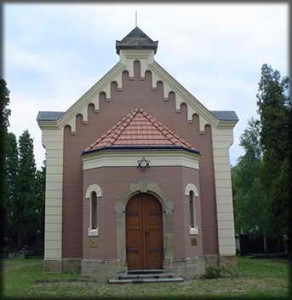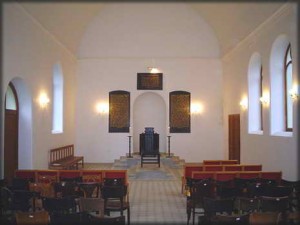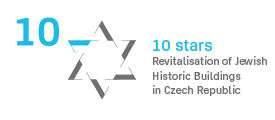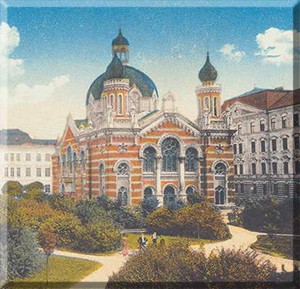History of the Jewish Cemeteries in Olomouc
South-west of today’s city centre – and not far from the medieval Jewish cemetery – is Smetanovy Sady, a public park named after the Czech national composer, Smetana. Long before it became a park, it was the site of Catholic and Lutheran cemeteries, and in 1867 they were joined by a new Jewish burial ground, covering 2,570 sq. metres of land listed as parcels 738/3, 738/4 and 103 st. in the Nová Ulice area Land Registry. A simple single-storey building stood on its south-eastern side, doubling as mortuary and grave-digger’s house, descriptive number 73. Burials ceased here in 1900, at which time some of the headstones were transferred to the new cemetery at Neøedín (where they can be found around the side walls), and in 1920 the land was turned into a park. Some gravestones remained, however, until the early 1940s, when the last remnants of the cemetery were finally obliterated by the Nazis.
Effectively the only well-preserved tangible monument to the Jewish community of Olomouc is the Jewish section of the municipal cemetery on Peace Avenue (třída Míru), 2 km from the city centre in the district of Neředín. This cemetery was set up in 1900 as part of a master plan for the growth of Olomouc, with the whole eastern sector earmarked for Jewish graves. This new Jewish cemetery today covers 9,040 sq. metres (the rear part of the original 18,604 sq. meters sector having been relinquished in 1962, by agreement with the city authorities). The dominant feature on entering the burial ground is the neo-Gothic funeral hall, its front decorated with a metal Star of David and the traces of a Hebrew inscription. The roll of honor which was once inside, bearing the names of 1,502 Jewish victims of the Second World War from Olomouc, is now transferred to the anteroom of the prayer room at No.7 Komenský Avenue (Komenského).
The ordered groups of graves number around a thousand, ranging from simple headstones to the most ornate tombs. The more modern of them are simple in form, in light or dark granite, marble or artificial stone, with inscriptions in Czech and German and minimal decoration and symbols. The more splendid or extravagant monuments are to be found mostly next to the funeral hall building. The well-tended cemetery is surrounded by a red brick wall, and its paths are lined with mature trees: red cedars – the trees of life – lindens, birches and poplars.
At both sides of the cemetery stand memorials to the fallen of the First World War, and between them the graves of 48 servicemen who died at the Klášterní Hradisko military hospital in Olomouc. At the end of an avenue of trees extending from the axis of the funeral hall stands a memorial in stone to the martyrs of Olomouc who fell victim to the Nazis, including the head precentor Berthold Wolf, the Religious Community chairman Dr Ludvík Meissner, and the poet Vlastimil Artur Polák.
Both the memorial to the martyred Jews and the cemetery funeral hall are listed as protected monuments (numbered 23874/8-3135 and 11219/8-11219 respectively).










